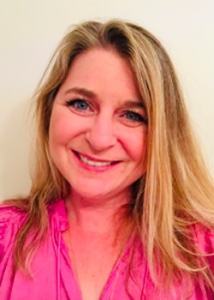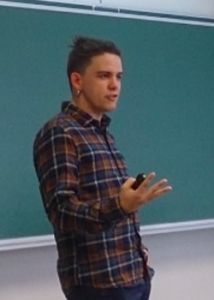Monique Chyba’s students produced a video highlighting the progress of COVID-19 vaccinations in Hawaiʻi as part of their National Science Foundation-funded project.
Despite the COVID-19 pandemic, 2020 was an unprecedented year for the University of Hawaiʻi at Mānoa Department of Mathematics when it came to research grants. Ten grants were awarded to the department in summer 2020 totaling more than $1.3 million, demonstrating the quality of the mathematical research conducted and produced at UH Mānoa. This is another example of UH Mānoa reaching its goal of Excellence in Research: Advancing the Research and Creative Work Enterprise (PDF), one of four goals identified in the 2015–25 Strategic Plan (PDF), updated in December 2020.
“Winning these highly competitive grants demonstrates UH Mānoa’s excellence in the field of mathematics,” said College of Natural Sciences Dean Aloysius Helminck. “The record number of grants awarded is a testament to the groundbreaking research conducted by our Department of Mathematics faculty, staff and students.”
“Department of Mathematics faculty and students are engaged in cutting edge research in pure and applied mathematics,” said Department of Mathematics Chair and Professor Wayne Smith. “It is gratifying that this work is receiving the support and recognition that it deserves.”
National Science Foundation

Five National Science Foundation (NSF) grants were awarded to the Department of Mathematics totaling nearly $1.2 million.
- Assistant Professor Elizabeth Gross was awarded a $464,828 NSF career grant to support a five-year project, “CAREER: Identifiability and Inference for Phylogenetic Networks using Applied Algebraic Geometry,” and focuses on phylogenetic networks and their parent models—phylogenetic mixture models—and will use applied algebraic geometry, in particular, algebraic statistics, to develop novel techniques for their inference. Phylogenetic tree and network reconstructions lead not only to a better understanding of our natural world, but also have applications in other fields, such as conservation and epidemiology.
- Professor Michelle Manes received a one-year $235,855 intergovernmental personnel act grant from NSF for her work at the foundation. Manes is a program director in the Division of Mathematical Sciences, and works with a team to make funding recommendations in the areas of algebra and number theory and will serve on several other NSF special programs.
- Associate Professor Thomas Hangelbroek was awarded a three-year grant of $142,465 for his project “New Directions in Mesh-Free Approximation with Localizable Kernels.” This project involves exploiting local structures within underlying kernel spaces to study linear and non-linear kernel approximation with non-uniform geometry and multi-scale, anisotropic kernels.
- Assistant Professor Evan Gawlik received a $135,304 grant to support his three-year project, “Computational Riemannian geometry: high-order methods, analysis, and structure preservation,” which will focus on designing and analyzing high-order methods for computational Riemannian geometry. Riemannian geometry plays a fundamental role in mathematical physics and geometric analysis, but it is notoriously challenging to discretize numerically. The project can be applied in a variety of areas, including computer graphics, engineering and numerical relativity.
- Professor Monique Chyba with co-principal investigators Associate Professor Yuriy Mileyko and Researcher Alice Koniges, were awarded a $199,023 grant to forecast COVID-19 in Hawaiʻi. The one-year project is called “RAPID: Modeling COVID-19 transmission and mitigation using smaller contained populations.”

Simons Foundation Collaboration Grant for Mathematicians
The department was awarded three new Simons Foundation Collaboration Grants for Mathematicians in 2020, tied for the sixth highest in the U.S., ahead of Cornell University, Johns Hopkins University, Massachusetts Institute of Technology and Princeton University. Each grant is $42,000.
- Professor Bjørn Kjos-Hanssen’s project “Computability and automatic complexity” investigates the automatic complexity of particular words of interest. In particular, he provided the first examples of infinite words with intermediate automatic complexity rate: the infinite Fibonacci and Tribonacci words.
- Assistant Professor Malik Younsi’s project “Removability and rigidity of circle domains” studies conditions for a circle domain to be conformally rigid. It expands on his work that has been published in Inventiones Mathematicae, which is regarded as one of the most prestigious mathematics journals in the world.
- Assistant Professor Andrew Sale’s project “Geometric group theory” focuses on studying symmetries. Sale said we can study symmetries of objects, such as squares, dodecahedrons or a rubik’s cube. The symmetries of these objects form an algebraic construction known as a group. Working in geometric group theory involves investigating properties of groups by using a mixture of geometric, topological, algebraic and combinatorial techniques.
American Mathematical Society (AMS) and Simons Foundation

The department was awarded an AMS-Simons Travel Grant in 2020 for $5,000 and will span two years.
- Temporary Assistant Professor Kameryn J Williams’s grant will support research in set theory and collaboration with set theorists in Europe and the U.S. Set theory is the branch of mathematics which studies the infinite, and it provides a foundation and common language for other fields of mathematics.
Private grant
- Professor Bjørn Kjos-Hanssen received a $7,000 grant from Decision Research Corporation, an insurance company in Honolulu, to support undergraduate and graduate students working on research and coding in the Go programming language. The project title is “Automatic complexity of Fibonacci arrays.”
—By Marc Arakaki

